
To kids and the untrained eye antique dolls might seem like nothing but old and worthless playthings, however, only experts know that several antique dolls could be true gold mines in disguise. For some collectors, they serve as the perfect decor to complete a rustic aesthetic, and for others, it’s a piece of history.
In 2014, three German dolls sold for over $100,000 at auction and held the record for the most expensive antique dolls ever.
Sit tight as we take you through the process of identifying and valuing antique dolls. These nuggets will come in handy for you as a new collector.
Table of Contents
Origin of Antique Dolls (the 1800s – 1920s)
Before we get into antique dolls’ origin, remember that we’re talking about toys made 100 years ago or more.
The first dolls originated in the 1800s during the Porcelain and Fine China figurine era. Within that period, other designs, such as rag dolls and variations of porcelain dolls, Bisque, came into existence.
These models were all the rage until 1920, when plastic and other types of hyper-realistic dolls entered the market due to technological advancement.
Types of Antique Dolls
This section of the article aims to introduce you to the different types of antique dolls that have surfaced through the years
China Porcelain Dolls of the 1800s
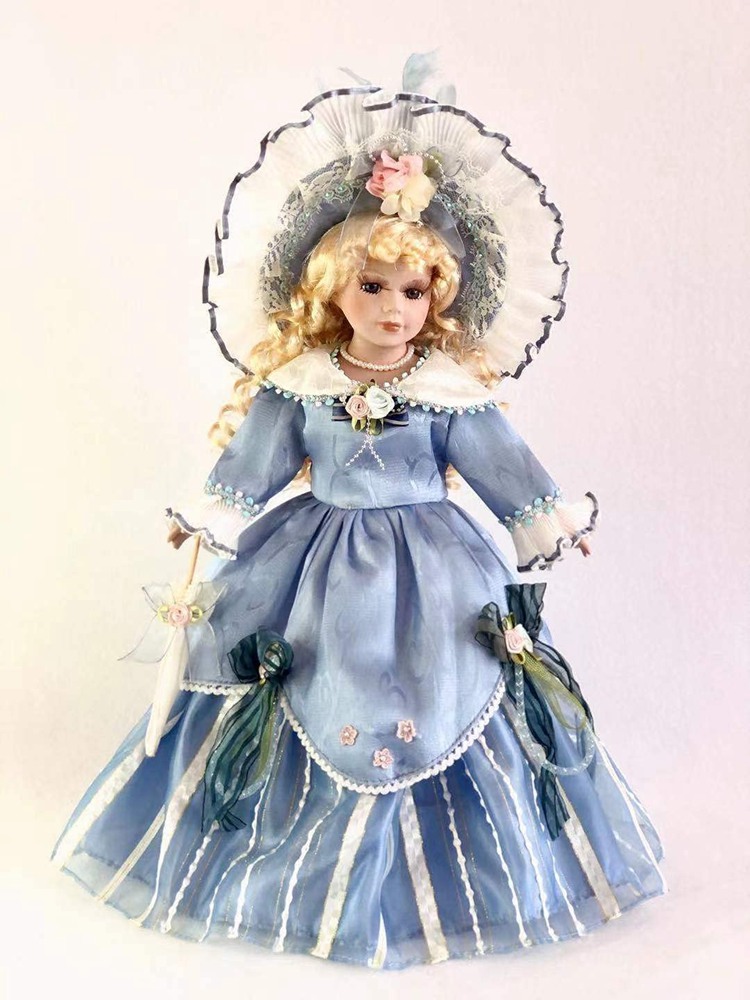
Chinese porcelain dolls are the oldest type in history. They originated as décor and not toys but evolved through the years. Original porcelain dolls made in China had wooden bodies fused with porcelain heads for an economic balance.
Artisans forged Porcelain in firing kilns set to 2300F or more. They’re typically overglazed with more color to create a realistic look. Although demand for China porcelain dolls dwindled in the 20th century, Western toymakers replicated the designs for collectors in their countries.
Regardless, the originals remain valuable models, as these toymakers couldn’t reproduce them. Certain factors, like production methods, differed and were integral to the final product.
They fashioned the first China porcelain dolls after adult women with grown-up hairstyles, makeup, and facial features. Models made in Germany had dark hair, while the Parisienne dolls had more fancy accessories like the women they mimicked.
Baby Dolls a.k.a. Bébé
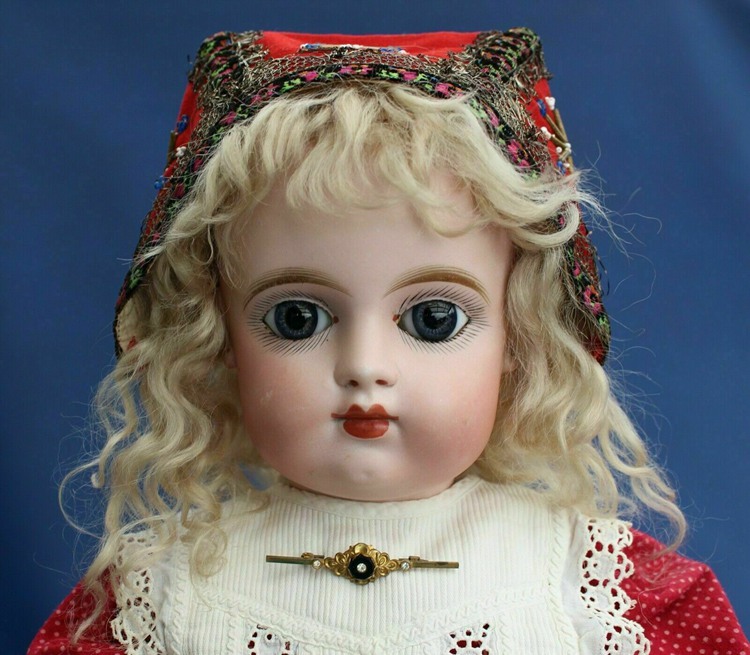
Although their names were Baby Dolls, these figurines had adult features. They’re products of the late 1800s, but by the 1900s, the company rebranded its style and molded the dolls with childish features instead.
Original Bébé dolls were doll-faced and animated, but the rising demand for character dolls led to a readjustment of the features.
Bisque Dolls 1860 – 1880
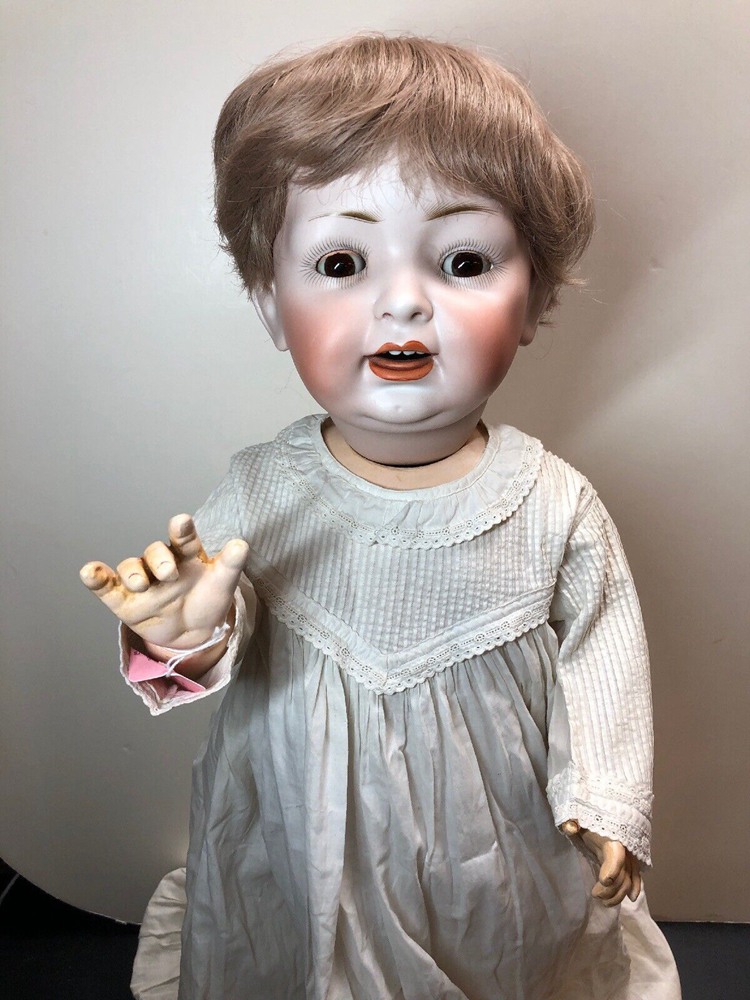
Although some people interchange Bisque dolls with Porcelain dolls, they’re not the same. The former had pale tones, making them closer to Caucasian skin tone than the Porcelain dolls, which looked cartoonish.
Its production started in France and extended to Thuringia in Germany due to the region’s richness in clay.
Bisque dolls had porcelain heads with a matte finish due to their no-glaze technique. Hence only the facial features were molded into an unmoving expression. It was, however, fused with stuffed leather or clothed bodies, making it easy for play.
The more petite Bisque dolls had their entire body parts made of Bisque, making them fragile, and they were called all-Bisque or Penny Dolls. Others maintained the clothed/composition bodies to balance the weight, and they came in all standard sizes from ½ inches to 5ft.
With time, Bisque dolls made way for other styles when composition materials became the preferred product for making dolls. Although they went into pseudo-extinction in the late 1800s, they regained popularity in the late 1900s when collector dolls became a thing.
Fun Fact: Bisque dolls are still in production today in China. However, anyone buying a Bisque doll today won’t enjoy it as a plaything because of its fragility. Instead, you’d appreciate it as a decorative piece.
Parian Dolls
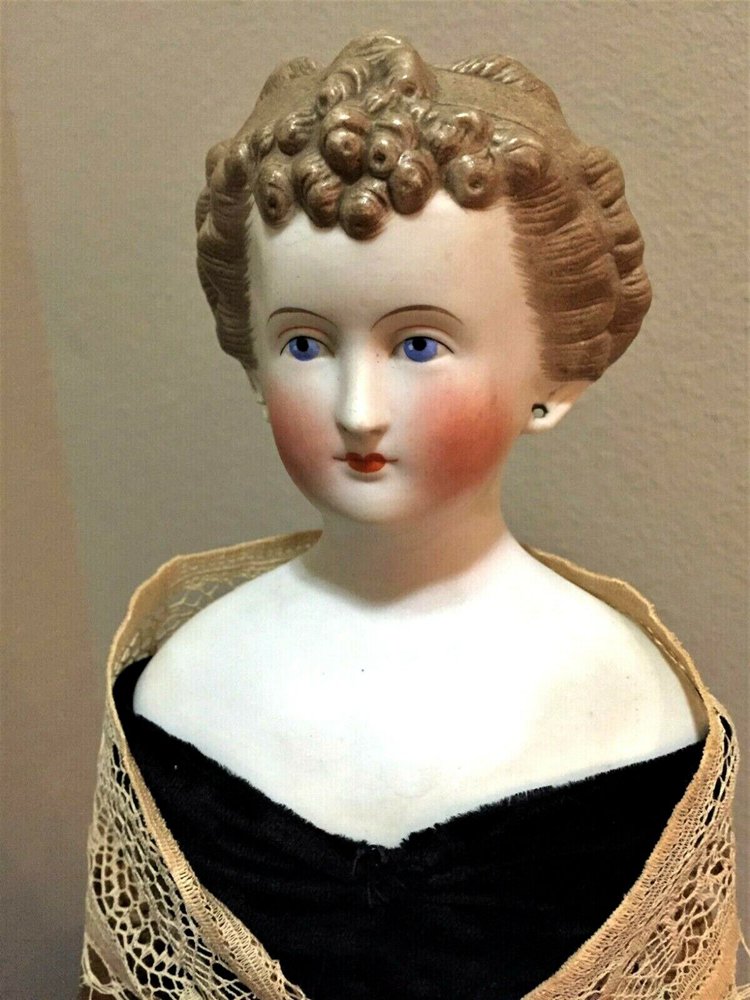
Parian dolls are a variation of Bisque and Porcelain dolls as they also have porcelain heads, but they weren’t for playing. Instead, this model was solely for display and had a plain-white paint job without tint.
Due to its white color looking like marble, Parian dolls were expensive in the 1800s. Since many of them were handcrafted, it’s unlikely to find two of the same. It’s the other reason the Doll’s purpose shifted from being a toy to a fancy décor.
Demand for Parian dolls increased, leading to an influx of new dollmakers trying their hands on the style. However, the high-quality antique dolls remained exclusive and expensive.
Most Expensive Antique Dolls
Compiled in this section are five of the most expensive antique dolls that have only recently been sold.
NO. |
Name |
Year |
Price |
1 |
Kammer & Reinhardt |
c. 1900s |
$395,750 |
2 |
Heinz Doll |
c. 1900 |
$188,000 |
3 |
Bisque Head |
1909 |
$135,000 |
4 |
Bru JNE Polichinelle |
Pre-1900 |
$8,000 |
5 |
Bru JNE R Porcelain |
Pre-1900 |
$6,000 |
5. Bru Jne R Porcelain Doll
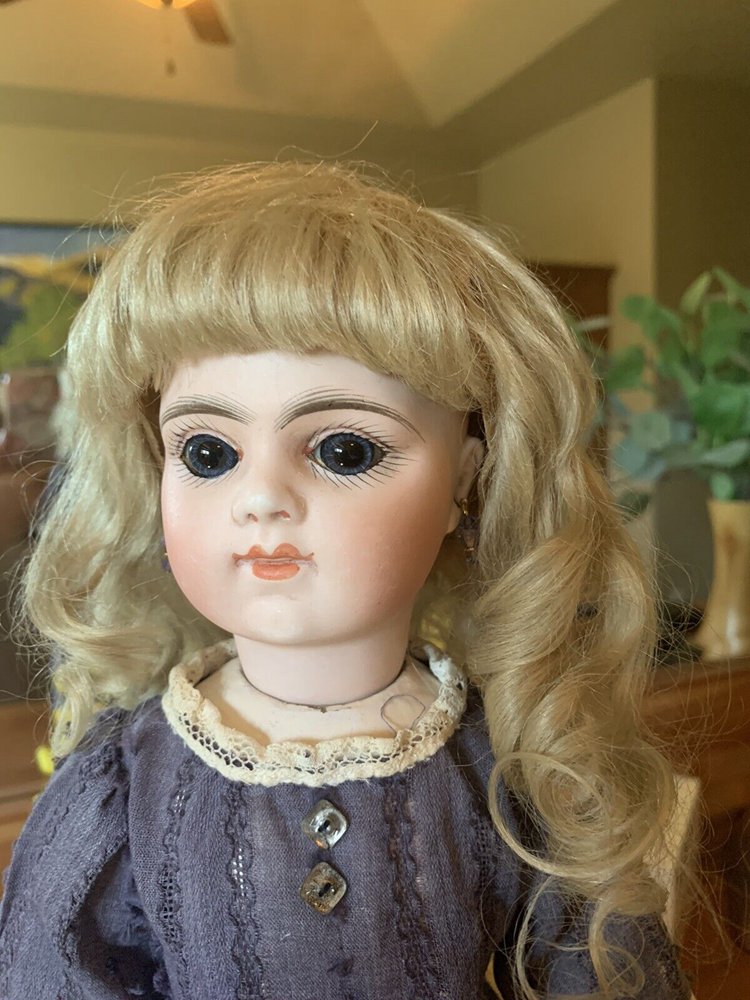
Price: $6,000
Year: Pre-1900
Mark: N/A
Bru Jne & Cie is a French antique doll typically dressed in traditional French clothing with French women’s features. This particular Doll has platinum blonde hair with full bangs and shoulder-length curls. She’s dressed in a cotton lavender gown with socks and boots.
4. Bru Jne Polichinelle Doll
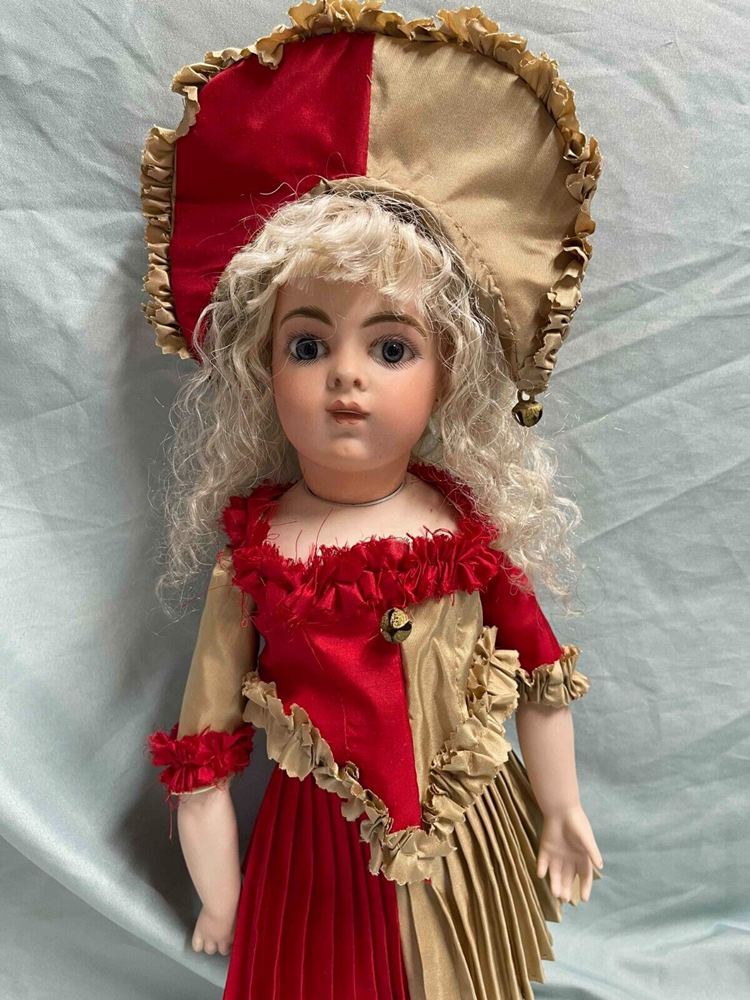
Price: $8,000
Year: Pre-1900
Mark: N/A
This Bébé doll has long, wavy blonde hair with paperweight light blue eyes and a Chevrot bisque body. It’s dressed in a red two-tone silk Polichinelle (a.k.a. Pulcinella) outfit with matching headgear.
3. Bisque head doll
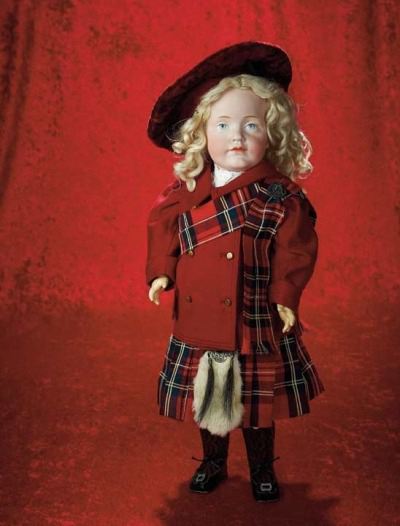
Price: $135,000
Year: 1909
Mark: K*R 106 53
This German Doll was made by Kämmer & Reinhardt in the likeness of a real-life person, one of Arthur Lewin-Funcke’s daughters, giving it an exciting backstory. Lewin-Funcke was a German sculptor very popular in the late 1800s, and he died in 1937.
The Doll looked like his famous son (but with hair), Andreas, a painter, and was sold by Theriault’s. He specialized in Ivory carving and received an honorary medal for his work as a sculptor. Before his passing, he became a significant artisan for Kämmer & Reindhart in the 1900s.
This Doll had curly blonde hair made of mohair with pale blue eyes, and she dressed in a red plaid skirt with a complimentary jacket. Her outfit looked like she was on her way to school, especially with the shoes and hat.
2. Heinz Doll
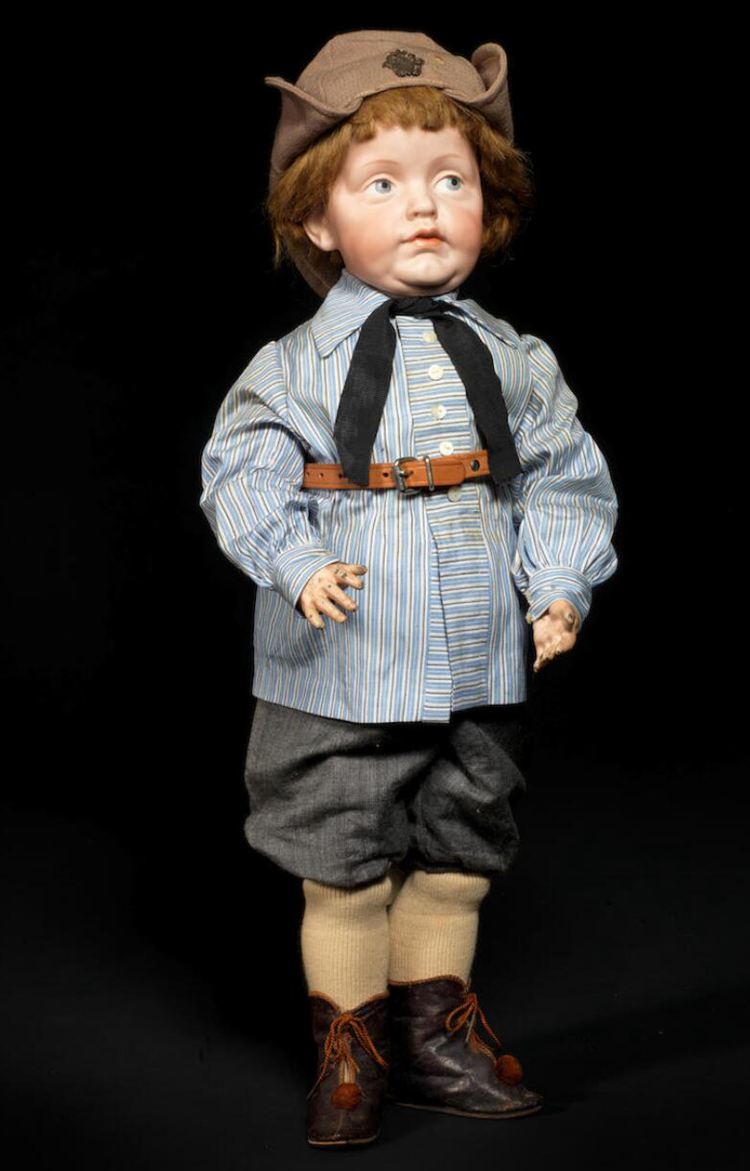
Price: $188,000
Year: c. 1900s
Mark: Incision on the back of the head, number 106 painted on the head.
Arthur Lewin-Funcke also made this boy doll, and he drew inspiration from his nephew, Heinz Berkowitz. Bonhams sold this Doll in pounds in 2014 as part of the Kämmer & Reinhardt lot.
He’s wearing a striped blue long-sleeve shirt with gray shorts, a brown belt, lace-up boots, gray shorts, and a tan hat. His shaggy bowl cut is mohair.
1. Kämmer & Reinhardt Doll
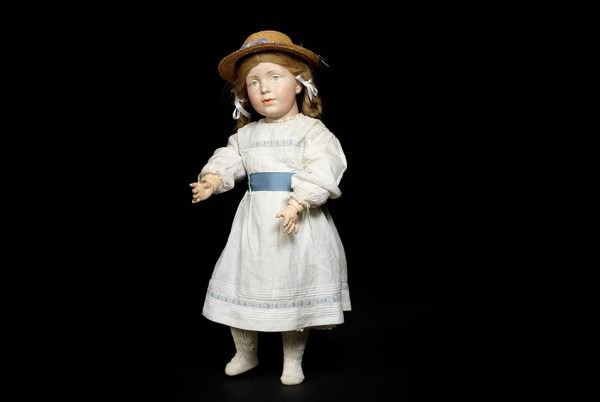
Price: $395,750
Year: c. 1900s
Mark: N/A
In 2014, Art-Net reported the sale of a German Kämmer & Reinhardt doll by Knightsbridge Auction House for $395,750.
She was a redhead doll with bluish-gray glass eyes and about 5ft tall making her life-size. Her white dress had a blue sash belt and embroidery on the chest and hem, while her red hair was in pigtails with white ribbon bows tied to each braid.
Finally, the Doll wore white stockings and had a nude raffia hat with a blue ribbon tied around it on her head. The auctioneer described this Doll as a rare prototype mold because of her unique features – pierced ears with a mature expression.
These components added to its monetary value, including the flashy time of its sale – the horror flick Annabelle was set to premiere in the cinemas, and The Conjuring movie had just left.
How to Identify Antique Dolls
With the number of antique dolls and the never-ending demand by collectors, it’s essential to know how to identify a real one. Using the unique features helps you distinguish authentic antique dolls from reproductions and replicas.
There are a few questions to answer in your quest to find valuable antique dolls. Check them out below.
Who’s the Doll’s Manufacturer?
Herein lies the big question – Who made the Doll? When in doubt, start at the beginning; in this case, that’s the manufacturer. Identifying the maker can tell many other things about an antique doll.
Typically, antique dolls have maker’s marks on unique parts of their bodies which helped customers differentiate between high and inferior-quality pieces. These marks come in handy, especially when distinguishing dolls with similar features.
As a general rule, most antique dolls have identification marks on the back of their bodies – either on the head or neck. However, others chose different parts such as shoulder blades, beneath the feet, or even labels on the Doll’s clothes.
Per Love to Know, you may need to take it further by removing the Doll’s hair (if it’s a wig) or parting it carefully to locate the printed mark. Dolls distributed in countries other than production sites include the words Made in XXX indicating that.
See the table below for popular antique dolls and their marks and check Doll Reference for more.
Name |
Mark |
Position |
Image |
Rose O’Neill Kewpie |
O’Neill |
Bottom of the Feet |
 |
French Poupee |
Tick Mark, Bebe Jumeau |
Back, Label on Cloth |
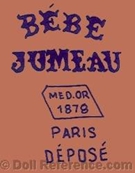 |
Alexander Doll Co. |
Label on Cloth |
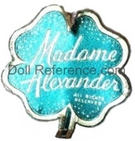 |
You can find more popular antique doll marks in Price Guides and reference books available for purchase or download online. If you have access to an appraiser (everybody does when they browse the internet), you may seek professional evaluation on your Doll.
What Distinguishing Physical Features Does the Doll Possess?
Not all antique dolls retain their maker’s mark, so you must use alternative identification methods to find their manufacturers. This system will also give you an estimated manufacturing date and help confirm the item is truly an antique doll.
For example, the German doll maker Armand Marseille Doll Co. produced antique dolls with Bisque heads between 1885 and 1930. Madame Alexander dolls were famous for their beautiful dresses in the early 1920s, and the 1907 Ideal Toy Co. dolls had unbreakable characters.
Antique dolls often have immovable features such as painted and molded eyes. It wasn’t until the 20th century that companies started making dolls with more realistic features, such as moveable and blinking eyes.
The same goes for other body features, from the hair to the limbs. One distinction, however, is with the 1800s antique dolls made after Bisque and Porcelain dolls. They had rooted hair made of mohair or even human hair, starting a new era of hyper-realistic dolls.
If you’re buying a Bisque doll, ensure its face is speck free, and if at all it must have, it should be sparse.
Learn more about these doll makers in the brief history section above.
What does the Material Say About the Doll?
Materials speak, figuratively speaking. They’re the essence of the era of their popularity, and that’s excellent knowledge to have as a collector. The oldest antique dolls were Porcelain, which originated in Europe in the mid-19th century.
That era was the period of fine China and Porcelain figurines, as you’ve learned above. Sometime between 1840 and 1880, the French and German doll makers joined the party and began making dolls with bisque heads.
A Bisque head is an unglazed China that is hard-fired, making it glassy and matte. The face shouldn’t be chalky but luminous. By the turn of the century, America and China adopted this method of forging doll heads.
Doll clothing is another giveaway, as leather outfits were famous for antique dolls. The vintage models have a more comprehensive range of clothes that rival real-life fashion. Also, you’ll note that the late-1800s to the early-1900s saw a rise in stuffed dolls.
Also, note the fashion of the outfit because it would tell the era your antique Doll existed. For instance, a Victorian Doll would wear a gilded dress, and the wooden-bodied dolls were French-made.
Antique Doll Values
Not that you’ve identified your antique Doll, the next step is knowing the value. You don’t want to undercharge your product as a seller or overpay as a buyer so pay attention. You should note that there’s no uniform price for antique dolls.
They’re only worth as much as a buyer is willing to pay; however, certain factors control an estimated value. These factors are related to the identification points as they either appreciate or depreciate the worth of an antique doll. They are;
- Who made the Doll?
- What Model is the Doll?
- What’s it made of?
- Is it in Good Condition?
- Is this model available?
- Who owned it before you?
Who Made the Doll?
When you enter a store hoping to buy an item, you subconsciously look for your favorite brand despite the availability of the same product on the aisle. That’s because you trust that brand to deliver high quality and the same works for antique dolls.
As a buyer, you shouldn’t just pay for the first antique Doll you find without researching. Knowing the maker tells you if it can increase in value or if you’ve wasted what could’ve been a good investment.
Bisque dolls made in France and Germany are the most valuable antique dolls because of their porcelain features. Porcelain is costly, especially when hand molded in a fire kiln.
Certain brands are famous for making the best antique dolls, and you can find them on the internet or through verified price guides. You’ve seen some of them in this guide, and you can look for more via search engines like Google, Bing, or Safari.
Made in Germany, antique dolls with the mark came post-1890 after the American McKinley Tariff Act required all manufacturers to state production countries.
See the table below for a short list of famous antique doll makers and some identification points per Spruce Crafts.
Brand |
Maker’s Mark |
Year |
Features |
Poupee by Gaultier |
1FG |
c.1880 |
Brunette Mohair hair, painted-on facial features, glass eyes, and bisque body parts. |
Kestner Doll |
(numbers) on the head and torso |
c.1880 |
Swivel bisque head, all-bisque features. |
Jumeau |
N/A |
1875 |
Glass eyes, mohair hair |
Kewpie by Rose O’Neill |
Paper Label, O’Neill on the bottom of the feet |
1912 |
All Bisque |
Dollhouse Doll |
No Mark |
1890 |
Molded Bisque hair, painted-on eyes |
Bébé |
number on the back of the head, paper label on the chest |
1914 |
all-bisque baby with sleepy eyes |
English Wooden |
N/A |
1800 |
Wooden physique & finish, black enamel eyes |
China Doll a.k.a. Flat Top |
N/A |
C.1850 – 1870 |
painted-on facial features, leather/cloth body, and heavy. |
What Model is the Doll?
Even within certain valuable brands, some models are worth more than others because of extra factors such as accessories, design, and body type.
What’s it Made of?
Material matters a lot when valuing an antique doll because producing some high-quality pieces requires a lot of money. For example, a doll with mohair or natural hair is worth more than one with painted-on hair, but that also depends on other factors.
If the painted-on features are more expensive than the moveable features, then the former takes top dollar. That’s why everything matters during appraisal and not just some parts.
Is it in Good Condition?
Once you’ve established the maker and Material, the next question to answer is if all parts are intact. Being made of expensive Material is not enough if the Doll is beyond repair. That typically applies to antique porcelain dolls.
A chip or crack doesn’t have to be a deal-breaker unless you want to display your antique porcelain doll. It’ll only mean you have to be extra careful when playing with it.
Is this Model Available?
The penultimate step is determining availability, having established the previous three points. Many rare and valuable antique dolls are scarce, leading to a high price value, so if you find one, you’re lucky.
Also, rarity makes it harder to verify authenticity, especially without an appraiser or a valid Certificate of Authenticity. If an antique doll poses as a rare model, your first step to confirming that is checking its availability.
That means rare models shouldn’t be too many in the market; if it is, that should ring your alarm bells. The natural laws of demand and supply then come into effect as high demand for less available products is grounds for a bidding war and increase in value.
Who Was/Were the Previous Owner/s of the Doll?
Most rare antique dolls are limited-editions and used toys passed down through generations. Old dolls with notable former owners and interesting stories stand higher chances of selling at high prices than regular dolls.
For example, the most expensive antique Doll ever sold was an Annabelle look-alike. The director of the 2017 movie keeps the Doll in his guest bedroom, but following this logic, it may sell for a premium value when it passes with his Estate in death.
Where can you buy an Antique Doll?
With the information you’ve gathered in this guide, you’re ready to go shopping for an antique doll. Knowing the right place to search is necessary, so you don’t fall into the trap of fraudulent vendors.
Finding like-minded collectors to put you through the ropes is the best thing to do. You can find them at
- open conventions or
- online forums that require membership.
Watch this 2019 Antique Doll Show in Paris, France.
These groups would help you identify and evaluate your antique dolls as you can access info from experienced collectors. Some include
FAQs
Q: How Can You Tell a Doll is Collectible?
Collectible dolls are valuable due to certain factors, including physical features, pedigree, Material, and model. If you’re buying an old doll, ensure you research its origin and history from the maker to the popularity during its era.
Knowing that information tells you there’s a possible demand for the Doll in today’s market, as nostalgia is a driving force for collectors. It also says if the antique Doll is made of high-quality materials that can fetch top dollar.
Q: How much is a Porcelain Doll Worth?
Porcelain Dolls sell for as low as $10 on eBay and as much as $10,000 for regular models. However, the real money makers are the rare models made pre-1900 because they were hand molded, many of which disappeared during the World Wars.
Even rarer models made by German and French toymakers sold for six figures years ago, but no antique doll has topped that value today.
Q: What’s the Difference between Bisque Dolls and Porcelain?
Bisque dolls have no glazing, while Porcelain dolls are glazed (under/over) in fire kilns.
Parting Words
Antique dolls are inherently valuable toys, and you can’t go wrong investing money into them, primarily if you use all the tips here. It’s easy to get carried away by the many options available, but it’s best to stop and make informed decisions.
Ensure you identify the Doll and authenticate it before paying. You can do that by using the identification tips and answering the questions above. In case you’ve forgotten, here’s a brief recap;
- Who made the Doll?
- What Model is the Doll?
- What’s it made of?
- Is it in Good Condition?
- Is this model available?
- Who owned it before you?





![Where To Sell Antique Furniture In 2022 [Ultimate Guide]](https://www.jacquelinestallone.com/wp-content/uploads/2022/09/Etsy-Your-Place-To-Buy-And-Sell-All-Things-Handmade-600x450.jpg)


